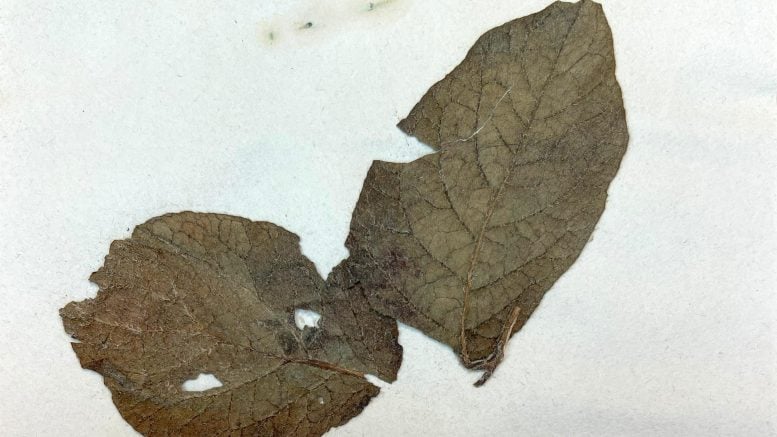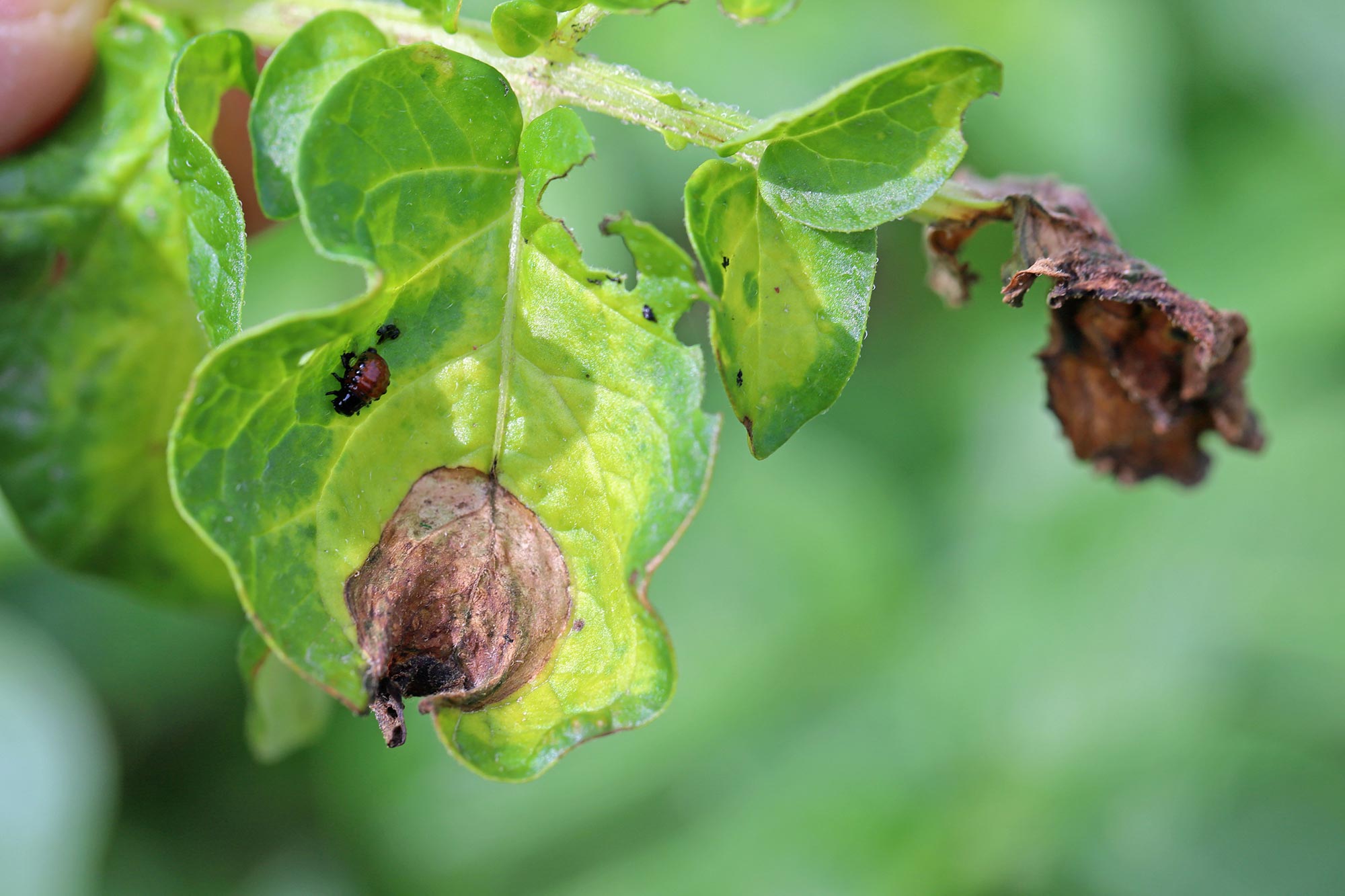Researchers at North Carolina State University have unveiled findings from a genetic study of historic potato leaves, revealing how the potato famine pathogen has evolved to overcome plant defenses. This study, which used novel DNA sequencing techniques, provides insights that could shape future plant breeding efforts to combat this persistent pathogen.

A historic potato plant specimen collected by David Moore from the National Botanic Garden in Glasnevin, Ireland showing late-blight disease. Credit: Jean Ristaino, NC State University
Innovative DNA Research Techniques Unveiled
“We use small pieces of historic leaves with the pathogen and other bacteria on them; the DNA is fragmented more than a normal tissue sample,” said Allison Coomber, an NC State former graduate student researcher and lead author of the paper. “We use small 80 base-pair chunks like a magnet to fish out similar pieces in this soup of DNA. These magnets are used to find resistance genes from the host and effector genes from the pathogen.”
“This is a first for looking at both potato and pathogen changes at the same time; usually researchers look at one or the other,” says Jean Ristaino, William Neal Reynolds Distinguished Professor of Plant Pathology at North Carolina State University and corresponding author of a paper published today (August 5) in




















Discussion about this post